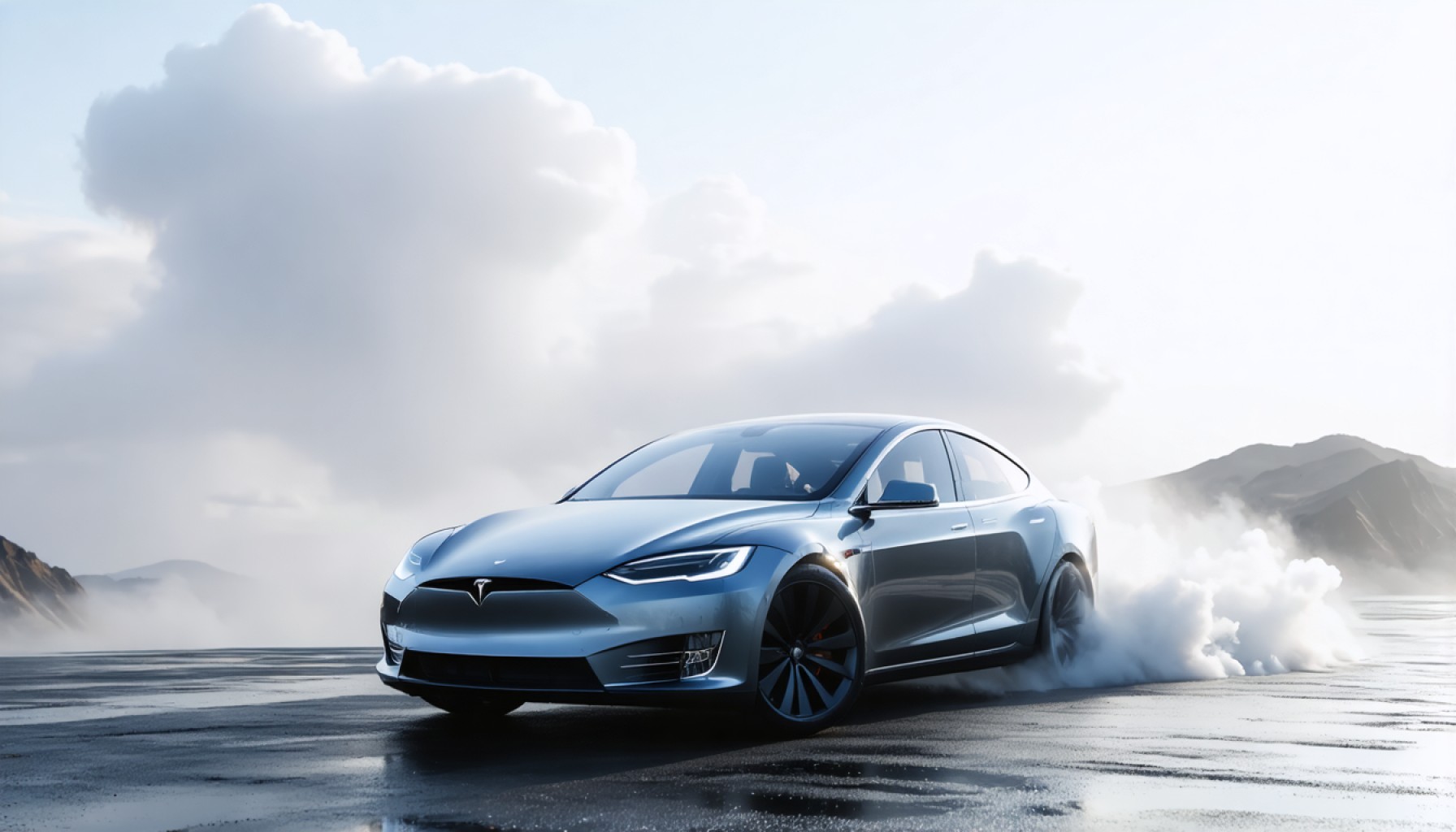- Tesla’s stock has dropped 2.6% as expectations arise for a decline in first-quarter vehicle deliveries, with projections ranging from 3.7% to 12%.
- European vehicle registrations plummet, signaling threats to Tesla’s global dominance, as similar trends affect China and the US.
- In the steepest decline in over two years, Tesla’s stocks have fallen 36% this quarter, influenced by market dynamics and Elon Musk’s controversial public image.
- Rising competitors like BYD in China, with a 39% increase in EV sales, underscore Tesla’s need for strategic reassessment.
- Tesla’s approach to workers’ rights faces criticism, prompting Sweden’s Folksam to divest, highlighting the push for corporate accountability.
- Tesla must innovate and adapt to restore momentum, addressing competition and public perception in a rapidly changing EV market.
Tesla, the emblem of electric ambition, feels the winds of change as turbulence besets its path. The stock’s 2.6% dip before the bell signals a growing storm with expectations set for a decline in vehicle deliveries for the first quarter. Wall Street analysts project an average drop of 3.7%, yet more cautious voices whisper of a potential 12% fall.
This cloud over Tesla’s horizon is thickening, particularly evident in Europe where vehicle registrations have taken a nosedive in March. Such news emerges like an ominous siren indicating that Tesla’s dominance may be under threat—not just on European shores but globally, as China and the US also report weaker sales numbers.
The once-unstoppable Tesla juggernaut is confronting its steepest descent in over two years, with stocks plunging by 36% this past quarter. The decline isn’t solely from market dynamics; Elon Musk’s high-profile, and occasionally polarizing, political ventures seem to unsettle investors. There’s an increasingly apparent shift in consumer interest, as the appeal of Tesla’s lineup faces the test of time and novelty wears thin.
Moreover, hungry competitors are gaining ground. BYD, Tesla’s strong contender from China, boasts a 39% increase in pure-EV sales, showcasing a vibrant contrast to Tesla’s muted performance. The burgeoning competition highlights a pivotal moment for Tesla, urging a reassessment of strategies amidst the growing electric vehicle market.
Backlash isn’t confined to the markets alone. On a different front, Tesla faces criticism over its stance on workers’ rights, leading Sweden’s illustrious insurer, Folksam, to divest its entirety of Tesla shares—a symbolic gesture with practical repercussions, echoing the sentiment of corporate accountability.
Against this backdrop, Tesla stands at a crossroads where adaptation isn’t merely an option but a necessity. The EV titan must innovate anew, addressing both market competition and public perception, to regain its momentum.
As challenges line the horizon, Tesla’s response will determine its trajectory. Whether the company can harness these headwinds to soar is a narrative of innovation, resilience, and leadership that the world keenly anticipates. The road ahead demands more than sustained excellence—it calls for a reimagined vision aligning with an ever-evolving landscape.
Tesla’s Turbulent Path: Navigating Challenges and Seizing Opportunities
Understanding Tesla’s Recent Decline
Tesla, once the frontrunner in the electric vehicle (EV) market, is currently navigating troubled waters. The recent 2.6% dip in Tesla’s stock before the bell suggests underlying issues, with projections anticipating a decline in vehicle deliveries. Wall Street analysts estimate an average drop of 3.7%, while more cautious voices suggest a potential 12% decrease.
Key Factors Affecting Tesla’s Performance
1. Global Sales Pressure: Tesla’s challenges are evident globally. Europe has reported a significant decline in vehicle registrations in March, indicative of waning demand. Similarly, both China and the U.S. have seen weaker sales, painting a bleak picture for Tesla’s once-unquestioned dominance.
2. Increasing Competition: Rivals like BYD are not only catching up but, in some cases, surpassing Tesla’s performance. BYD’s 39% increase in pure-EV sales presents a stark contrast, highlighting a competitive EV landscape that Tesla must reckon with.
3. Investor Concerns: Elon Musk’s high-profile activities and political stances have raised concerns, contributing to a 36% plunge in Tesla’s stock this past quarter. Investors are increasingly attentive to leadership decisions that might affect Tesla’s market perception and financial health.
4. Social and Corporate Responsibility: Criticism over Tesla’s workers’ rights policies has led to significant divestments, such as Sweden’s Folksam insurer divesting all Tesla shares. This corporate exodus underscores the growing importance of ethical governance in maintaining investor trust.
Analyzing Market Trends and Future Directions
– EV Market Growth: Despite Tesla’s recent challenges, the global EV market is expanding. Tesla must leverage its innovation prowess to capitalize on the expected EV market growth. Partnering with other tech companies to improve vehicle software or battery technology could provide a competitive edge.
– Technological Innovation: Staying at the forefront of technology innovation remains crucial. Tesla should focus on advancing its self-driving software and improving battery efficiency to enhance vehicle performance and appeal.
– Sustainability Initiatives: Further emphasizing sustainability could reinvigorate Tesla’s brand appeal. Initiatives in renewable energy and sustainable manufacturing processes could bolster public perception and attract environmentally conscious consumers.
Recommendations for Tesla Enthusiasts and Investors
– Monitor Economic Indicators: Prospective EV buyers and investors should keep a close eye on economic trends and Tesla’s quarterly performances to make informed decisions.
– Stay Updated with Rival Developments: Follow competitors, especially those like BYD, which are rapidly advancing. Understanding their strategies could provide insights into potential future shifts in the EV market landscape.
– Diversify Your Portfolio: For investors, diversifying investments across other promising EV manufacturers alongside Tesla can mitigate risk while maintaining a stake in the burgeoning EV market.
Conclusion
Tesla’s current challenges underscore the importance of adaptability in a dynamic industry. Key strategies include embracing technological advancements, focusing on sustainability, and addressing investor and public concerns transparently. For Tesla to navigate these turbulent times successfully, it must innovate with a reimagined vision aligning with the evolving landscape of electric vehicles.
To learn more about the broader context of evolving automotive technologies, you might want to explore resources offered by Tesla.
